Troy Bilt’s zero-turn hydrostatic transmission is one of the best in the market. However, there are some common problems that owners face with this product. In Troy Bilt Zero Turn Hydrostatic Transmission Problems is that the transmission leaks fluid are most common.
This can be caused by a variety of factors, including a loose hydraulic line or a damaged gasket. Another common problem is that the transmission doesn’t engage properly. This can be caused by a variety of factors as well, including low hydraulic fluid levels or air in the system.
Another potential problem is that the hydrostatic filter may be dirty or clogged.
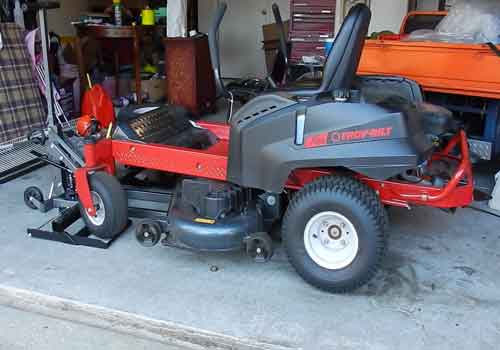
transmission leaks fluid problem fix
However this problem arises, you can easily solve this problem by the following steps.
Step-1
Remove the four screws connecting the transmission tubing to the right side of the engine and dismount the transmission shield.
Step-2
Go around to both sides of your engine and disconnect any hoses or wires that connect directly to it.
Step-3
Remove all of your fluid pressure hoses and replace them with new ones, then attach them back to their corresponding connectors on the new hoses.
Step-4
Attach the new hoses back onto the engine and tighten them down.
Step-5
Reattach the transmission shield using the four screws that you removed earlier.
Step-6
After performing all of these steps, it is now time to fill up your transmission’s gearbox with brand-new ATF fluid that comes with your Hydrostatic Transmission Kit.
Step-7
Take a drip pan and place it under your transmission housing.
Step-8
Remove the two screws that hold the drain plug onto your transmission case, and then remove the drain plug from the inside of your transmission.
Allow any fluid that comes out to be drained into the drip pan below it. You can now see an orifice in the bottom of your engine that is collecting small amounts of fluid as well as “puddles”.
Step-9
Replace the drain plug and then the two screws that you removed earlier.
Step-10
Now you will be poring over your new transmission with a flashlight to see if there are any leaks within the case. There should be no leaks, as long as you did everything correctly.
So in short, you should have no leaks or problems with your new transmission now that it is installed and working properly.
What Causes Hydrostatic Transmissions to Fail?
If you have a lawn tractor, zero-turn mower, or another piece of equipment with a hydrostatic transmission, you know that these transmissions provide smooth, efficient power transfer.
But like any mechanical system, they’re susceptible to failure. In this blog post, we’ll explore the most common causes of hydrostatic transmission failure and what you can do to prevent them.
The most common cause of hydrostatic transmission failure is leaked. Leaks can occur in the pump, wheel motors, or drive lines. While small leaks might not seem like a big deal, they can quickly lead to larger problems.
Even a small leak can cause the fluid level in your transmission to drop, leading to overheating and eventual failure. To prevent leaks, be sure to check all hoses and fittings regularly for cracks or damage. If you find a leak, repair it immediately.
Another common cause of hydrostatic transmission failure is contamination. Contamination can come from dirt, water, or even oil. If contaminates get into your system they can wreak havoc on seals and bearings, leading to premature wear and eventually failure.
The best way to prevent contamination is by keeping your equipment clean and storing it in a dry environment when not in use.
You should also change the hydraulic fluid according to the manufacturer’s recommendations – typically every 100 hours of use or once per season – to flush out any contaminants that may have made their way into the system.
Finally, improper maintenance can also lead to hydrostatic transmission failure.
Just like any other mechanical system on your equipment, regular maintenance is crucial for preventing problems down the road.
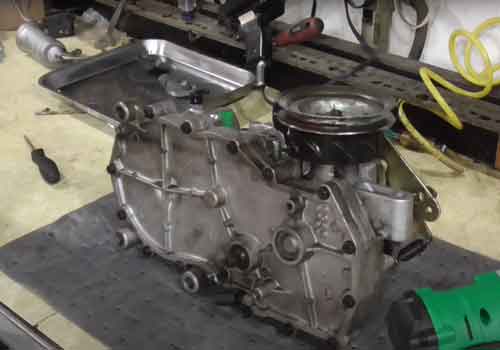
Read More About Stihl Fs91R Problems
Why Won’t My Hydrostatic Mower Won’t Move?
There are a few possible reasons why your hydrostatic mower won’t move. The first thing to check is the oil level in the hydrostatic transmission. If the oil level is low, add oil until it reaches the full line on the dipstick.
If the oil level is good, then check the drive belt to make sure it’s not broken or excessively worn. The drive belt connects the engine to the hydrostatic transmission, and if it’s damaged, the mower won’t be able to move. Another possibility is that the hydrostatic filter is clogged.
The filter prevents debris from getting into and damaging the transmission, and if it’s clogged, fluid can’t flow properly through the transmission.
To clean or replace the filter, consult your owner’s manual. Finally, if none of these solutions fix the problem, you may need to have your mower serviced by a professional.
Can You Adjust a Hydrostatic Transmission?
A hydrostatic transmission is a type of continuously variable transmission (CVT) that uses pressurized hydraulic fluid to power the vehicle’s wheels.
The main advantage of a hydrostatic transmission is its infinite gear ratios, which allows the engine to always operate at its most efficient speed. Hydrostatic transmissions are often used on lawn tractors and other types of small agricultural and construction equipment.
However, they can also be found on some larger vehicles such as buses and fire trucks. While hydrostatic transmissions are generally very reliable, there are a few things that can go wrong with them. One common problem is leaking seals, which can cause the hydraulic fluid to leak out.
This can lead to loss of power and reduced efficiency. Another potential issue is cavitation, which occurs when air bubbles form in the hydraulic fluid. This can cause noise and vibration, as well as reduced efficiency and power.
If you suspect that your hydrostatic transmission is not working properly, it is important to take it to a qualified technician for diagnosis and repair.
Trying to adjust or repair a hydrostatic transmission yourself can be dangerous and may make the problem worse.
What Oil Goes in a Hydrostatic Transmission?
There are a few different types of oil that can be used in a hydrostatic transmission, but the most common is ISO 32 hydraulic oil. This oil has a high viscosity, which helps to keep the transmission components lubricated and running smoothly.
Troy Bilt Zero Turn Hydrostatic Transmission Fluid Change
If you own a Troy Bilt zero-turn mower, it’s important to keep the hydrostatic transmission fluid changed. This helps keep the transmission running smoothly and prevents costly repairs down the road.
Here’s a step-by-step guide to changing the hydrostatic transmission fluid in your Troy Bilt zero-turn mower.
- Park your mower on a level surface and turn off the engine. Remove the key from the ignition to prevent accidental starting.
- Raise the deck of your mower using the deck lift lever. This will give you access to the hydrostatic transmission fluid dipstick.
- Locate the hydrostatic transmission fluid dipstick on the side of the transmission housing (it will have a red handle). Wipe any dirt or debris from around the dipstick before removing it from its housing.
- Check the level of hydrostatic transmission fluid using the dipstick (the fluid should be at or just below the “full” mark on the stick).
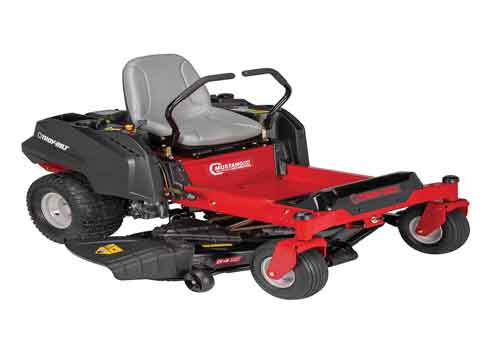
Troy Bilt Zero Turn Steering Adjustment
Troy Bilt is a trusted name in lawn care, and its zero-turn mowers are some of the best on the market. If you’re lucky enough to own one of these machines, you know that they cut down on mowing time significantly. But what happens when the steering starts to feel off?
Luckily, it’s easy to adjust the steering on a Troy Bilt zero-turn mower. With a few simple steps, you can have your mower running like new again. First, check the owner’s manual for your specific model.
There may be slight variations in the adjustment process depending on which model you have. Next, locate the two adjustment screws on either side of the steering column. These are usually located near the top of the column.
Using a Phillips head screwdriver, loosen both screws about 1/4 turn each. Then, hold onto the steering wheel and lightly turn it back and forth until it feels loose. At this point, you can begin adjusting each screw until the steering feels tight and responsive again.
Once both screws are tightened down, test out your mower to make sure everything is working properly. With a little bit of fine-tuning, you’ll have your Troy Bilt zero-turn mower running like new in no time.
Troy Bilt Zero Turn Won T Move
If your Troy-Bilt zero turn won’t move, there are a few things you can check to troubleshoot the issue. First, make sure that the transmission is neutral. If it’s not, the zero turns won’t move.
Next, check the parking brake to make sure it’s disengaged. If both of these are set correctly and the zero turns still won’t move, there may be an issue with the drive belt or transmission. You’ll need to take your zero-turn to a qualified technician to have it checked out and repaired if necessary.
Troy-Bilt Hydrostatic Transmission Adjustment
If your Troy-Bilt riding mower is giving you trouble with the hydrostatic transmission, it may be time for an adjustment. Here’s a step-by-step guide on how to do it:
- Jack up the front of the tractor and support it with jack stands. This will give you access to the transmission housing.
- Remove the cap from the transmission housing and drain the fluid into a catch pan.
- Clean out any debris that may have accumulated in the housing, and then replace the fluid (using new hydraulic oil).
- Replace the cap on the transmission housing, making sure it is tightened securely.
- Lower the tractor off of the jack stands, and start it up. Allow it to warm up for a few minutes before proceeding.
- With your foot on the brake pedal, shift into forward gear and slowly release the clutch/brake lever until you feel resistance. At this point, stop moving the lever and hold your foot on the brake pedal firmly.
Now check to see if the tractor moves forward when you let go of the brake pedal–it should not move at all. If it does move slightly, readjust as necessary and recheck until you achieve proper pressure.
Troy Bilt Zero Turn Won T Turn Left
If you’re a Troy-Bilt owner with a zero-turn mower, you know the importance of keeping it in good working order. But what do you do when your zero-turn mower won’t turn left? There are a few things that could be causing this issue.
The first thing to check is the transmission. If the transmission isn’t functioning properly, it could be preventing the left wheel from turning. Another possibility is that the steering linkage is damaged or bent.
This can usually be fixed by simply replacing the damaged parts. If neither of these solutions solves the problem, it’s possible that the engine itself is to blame. If this is the case, you’ll need to take your mower to a qualified repair shop for diagnosis and repairs.
In most cases, a Troy-Bilt zero-turn mower that won’t turn left can be fixed relatively easily. However, if you’re unsure of what’s causing the problem, it’s always best to err on the side of caution and take your mower to a professional for service.
Hydrostatic Transmission Slipping When Hot
If you have ever wondered why your hydrostatic transmission slips when hot, here is the answer. It all has to do with the fluid inside the transmission. When the temperature outside is warm, the fluid inside the transmission expands.
This increased fluid volume puts more pressure on the seals and gaskets in the system which can cause them to leak. The only way to prevent this from happening is to keep your transmission fluids at a consistent level and temperature.
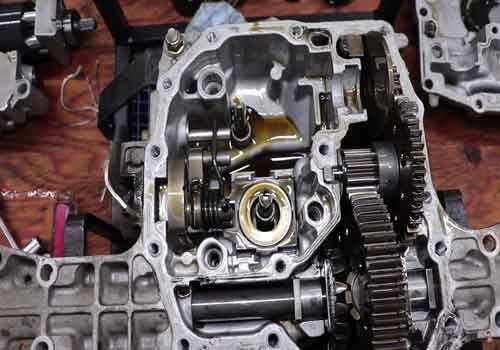
Read Also Kubota Tg1860G Problems
Troy Bilt Hydrostatic Transmission Fluid
If your Troy-Bilt riding mower won’t move, or if it moves very slowly, the problem may be in the hydrostatic transmission. Hydrostatic transmission is a closed system that contains hydraulic fluid. This fluid is under high pressure and can leak out of the system if there is a problem with one of the seals.
If your mower has a hydrostatic transmission, you will need to add hydrostatic transmission fluid (HTF) to the system if it is low.
You should also check the HTF level if your mower starts making strange noises, as this can be a sign that the fluid is getting low. Adding HTF to your Troy-Bilt riding mower is a simple process.
First, locate the fill plug on the side of the transmission housing. Remove this plug and insert a funnel into the opening. Pour HTF into the funnel until it reaches the full line on the dipstick. Replace the fill plug and start up your mower to check that it is moving correctly.
If you find that you are losing HTF quickly, or if your mower still isn’t moving correctly after adding HTF, you will need to take it to a service center for further diagnosis.
Troy Bilt Zero Turn Parking Brake
Most people are familiar with the standard parking brake that is found in most vehicles. This type of parking brake is usually operated by a pedal or lever that is located near the driver’s seat.
However, there is another type of parking brake that is becoming increasingly popular, particularly on larger vehicles such as RVs and buses.
This type of parking brake is known as a Troy Bilt zero-turn parking brake. As its name suggests, this type of parking brake does not require the use of a pedal or lever. Instead, it uses a spring-loaded mechanism to engage the brakes automatically when the vehicle comes to a stop.
This makes it much easier to park large vehicles, especially in tight spaces. It also eliminates the need to remember to engage the parking brake manually, which can be easy to forget when you’re driving a larger vehicle.
If you’re looking for an easy-to-use and reliable parking brake for your RV or bus, then consider investing in a Troy Bilt zero-turn parking brake.
Specification
| Model | Mustang 50 |
| Steering | power |
| Engine | 24HP |
| Clutch | Electrical |
| Chassis | Optional |
| Fuel Tank | 2.8 gallon |
| Weight | 620 pounds |
| Battery | 12V |
| piston | 8 |
| Factory | Japan |
| Price | $ 3,124 |
What are some Troy-Bilt zero-turn transmission problems?
I have a troy-built zero-turn mower with a hydrostatic transmission on it. The transmission has been leaking since we got it and would not shift into gear one time while I was using it. We replaced the seal and gasket, but there are a couple of other problems.
The manifold on the left side of the engine is leaking, we cleaned all the oil off and tightened it back down, but there is still a lot of oil under there.
Also, the transmission seems to be leaking out of the bottom of it. Is this fixable? If so what will it cost? I know that troy-bilt will not cover repairs on these.
Why is my Troy-Bilt lawn mower smoking?
We replaced the seal and gasket, but there are a couple of other problems. The manifold on the left side of the engine is leaking, we cleaned all the oil off and tightened it back down, but there is still a lot of oil under there.
Why is my hydrostatic mower not moving?
The transmission has been leaking since we got it and would not go in gear three times while I was using it. We replaced the seal and gasket, but there are a couple of other problems.
The manifold on the left side of the engine is leaking, we cleaned all the oil off and tightened it back down, but there is still a lot of oil under there.
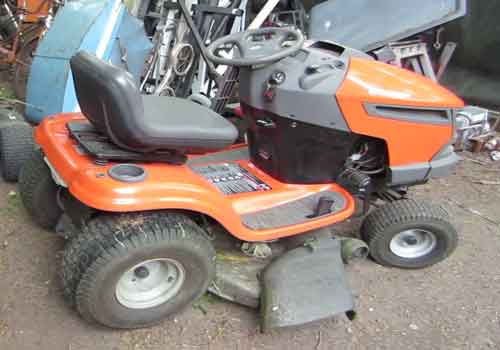
Why won’t my mower move forward or backward?
The transmission has been leaking since we got it and would not gear down into second gear. We replaced the seal and gasket, but there are a couple of other problems too.
The manifold on the left side of the engine is leaking, we cleaned all the oil off and tightened it back down, but there is still a lot of oil under there.
FAQ
Is there fluid in a hydrostatic transmission?
Yes, there is fluid in the transmission of a hydrostatic mower. A hydrostatic transmission works by using fluid pressure to make the blades spin. The fluid has to be in the transmission for it to work properly.
What kind of oil should I use in my Hydrostatic Transmission?
You should always use a type of synthetic oil in your hydrostatic transmission. You can also mix synthetic oil with standard oils if you wish. However, you should not use full synthetic as this will cause more problems than good.
Is hydrostatic oil and hydraulic oil the same?
Yes, in fact, hydrostatic and hydraulic oil is made from the same base components. However, they are manufactured very differently. Hydrostatic fluid is normally a type of synthetic fluid that has been specially formulated to work with hydrostatic transmission.
Whereas hydraulic fluid is a type of grease or oil used in hydraulic systems such as pumps and cylinder heads.
Fix Your Troy Bilt Mustang 50 Hydrostatic Transmission Problems
Conclusion
If you’re having trouble with your Troy Bilt zero-turn hydrostatic transmission, there are a few things you can do to try and fix the problem. Thanks for reading about Troy Bilt Zero Turn Hydrostatic Transmission Problems.